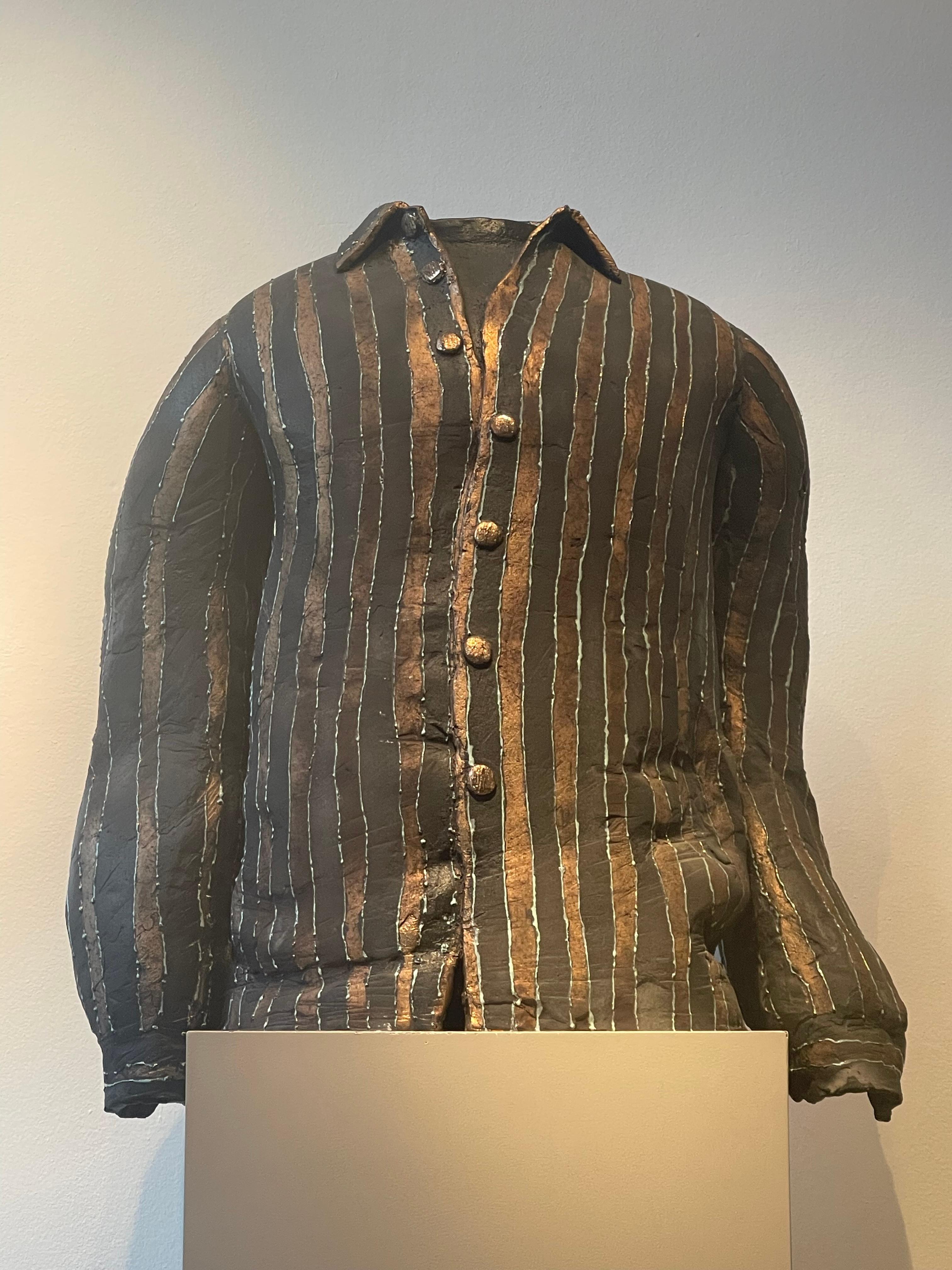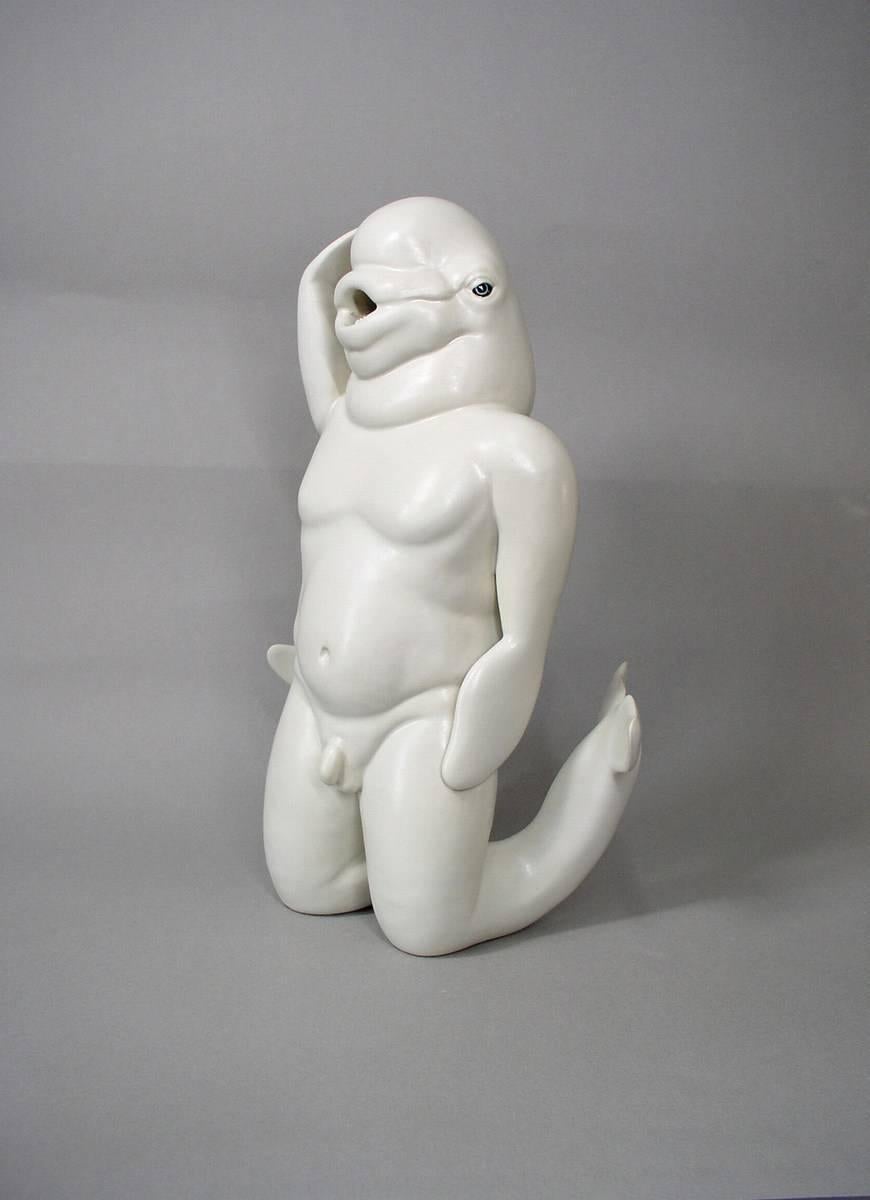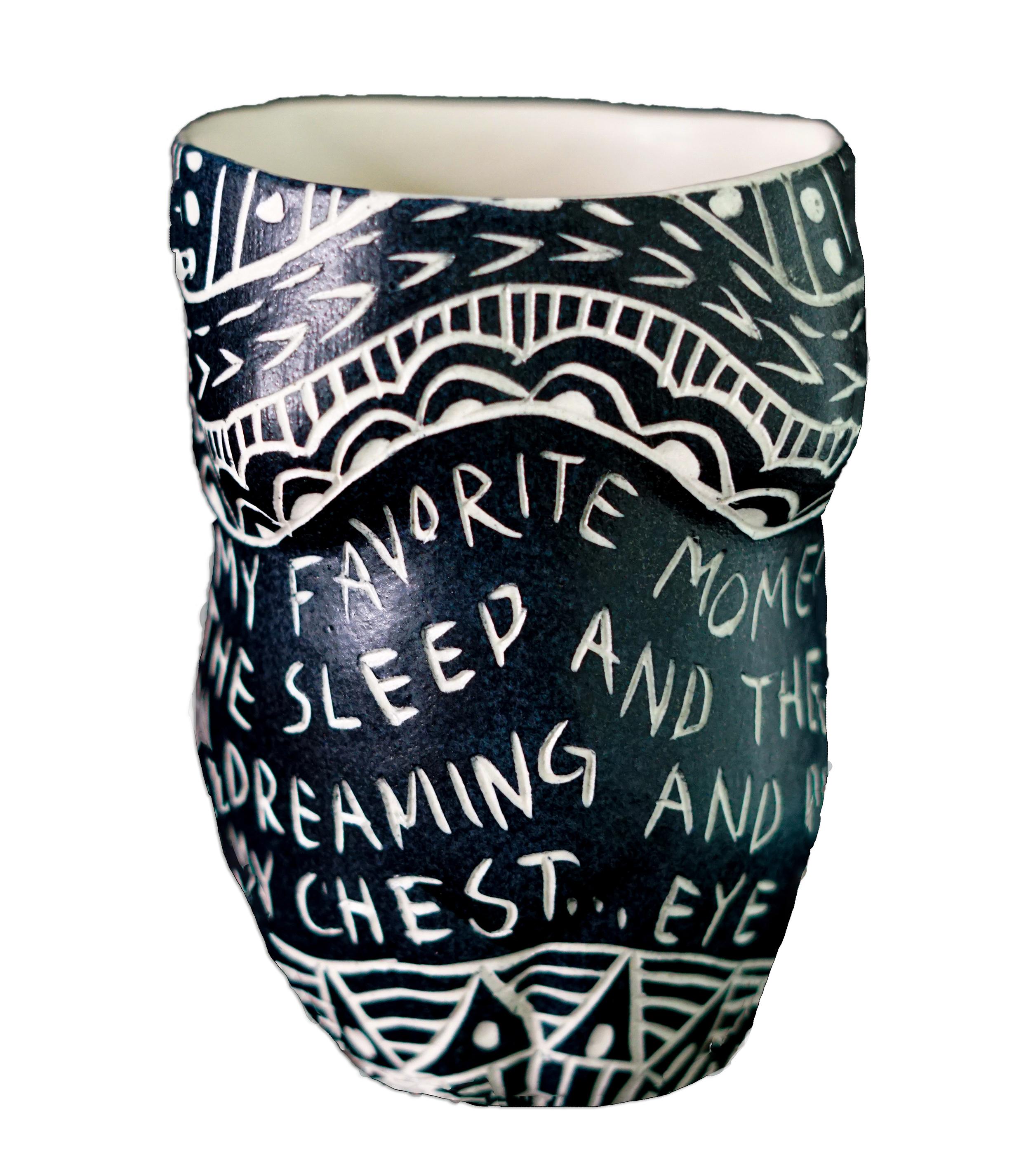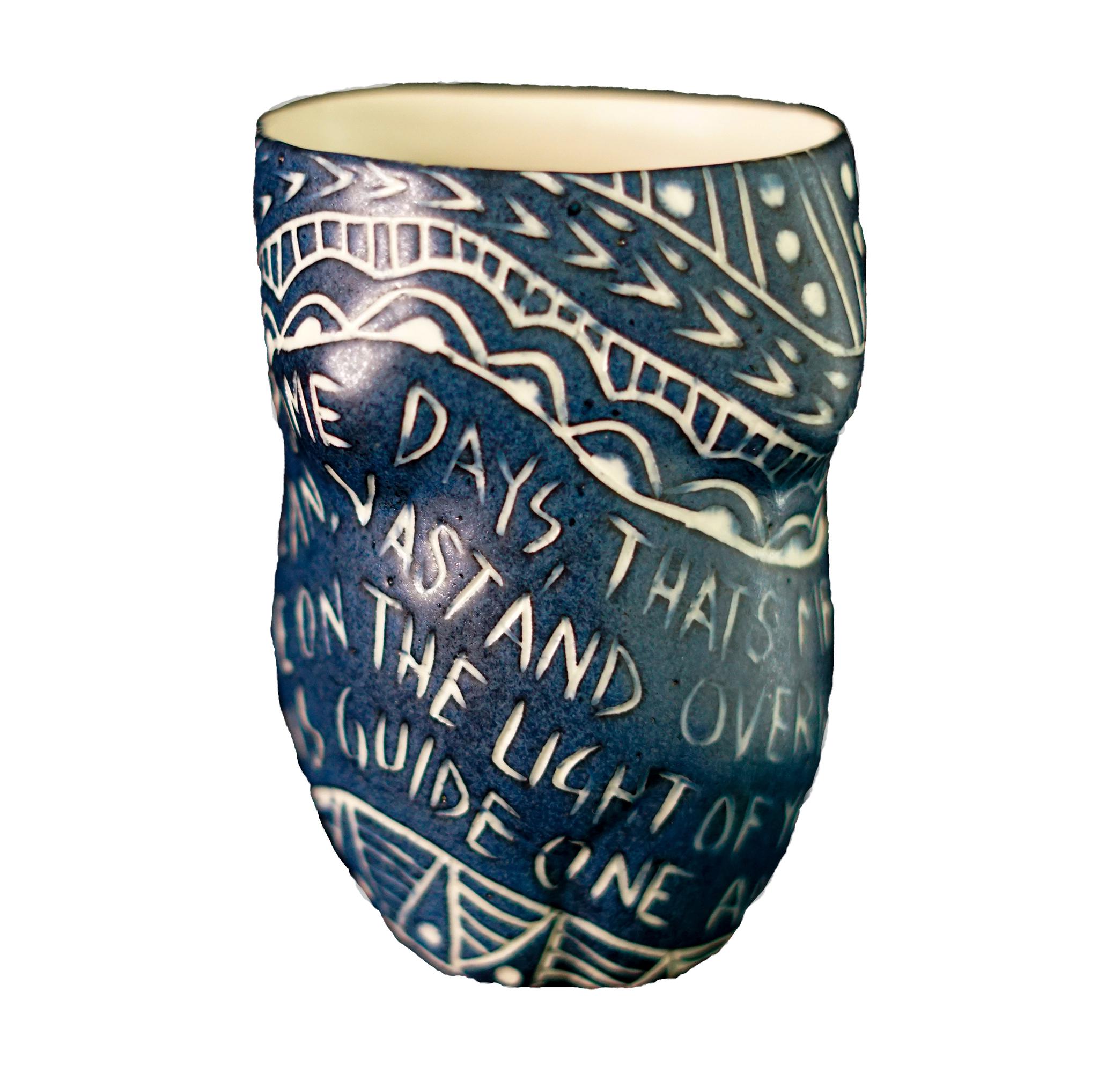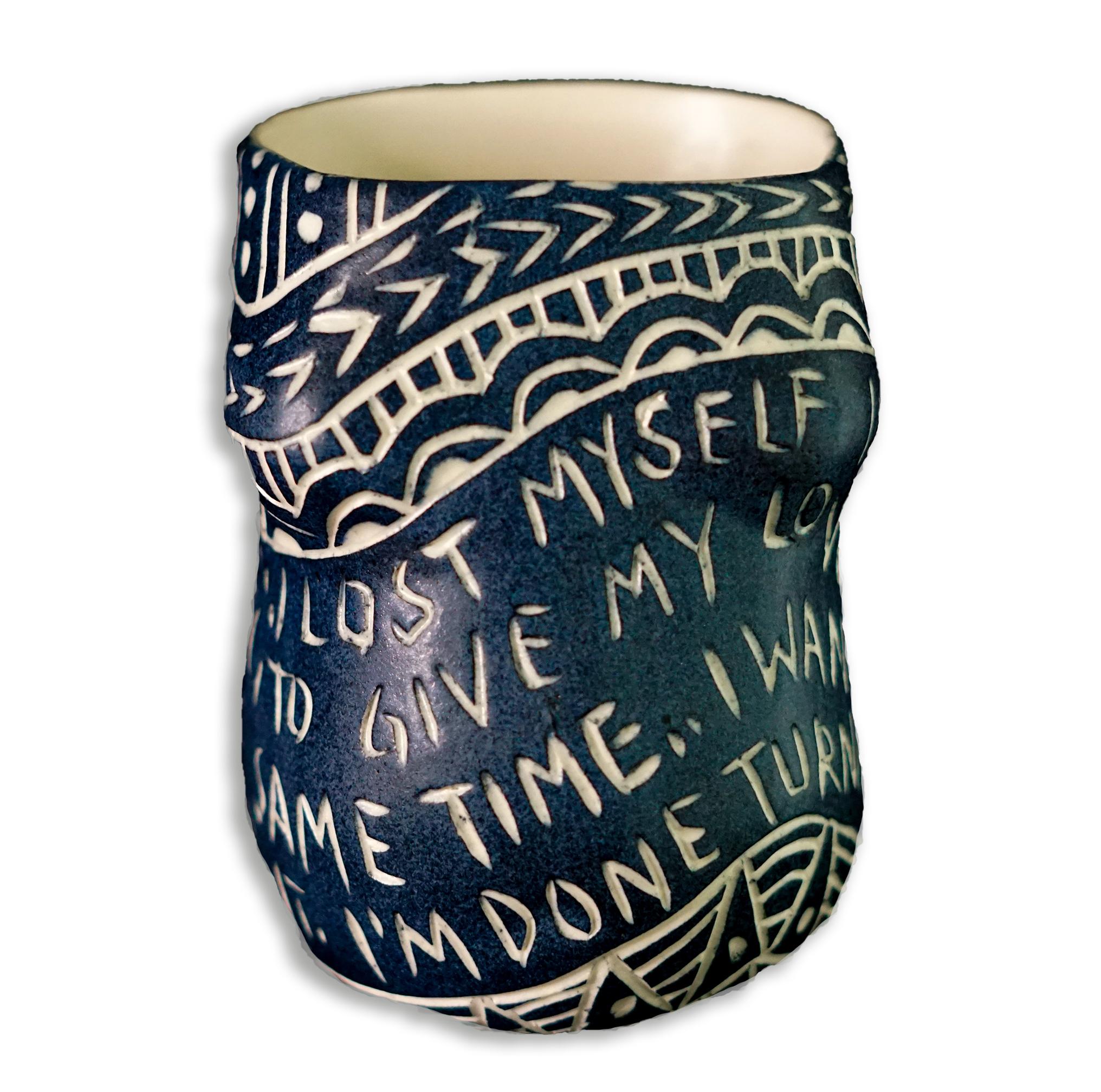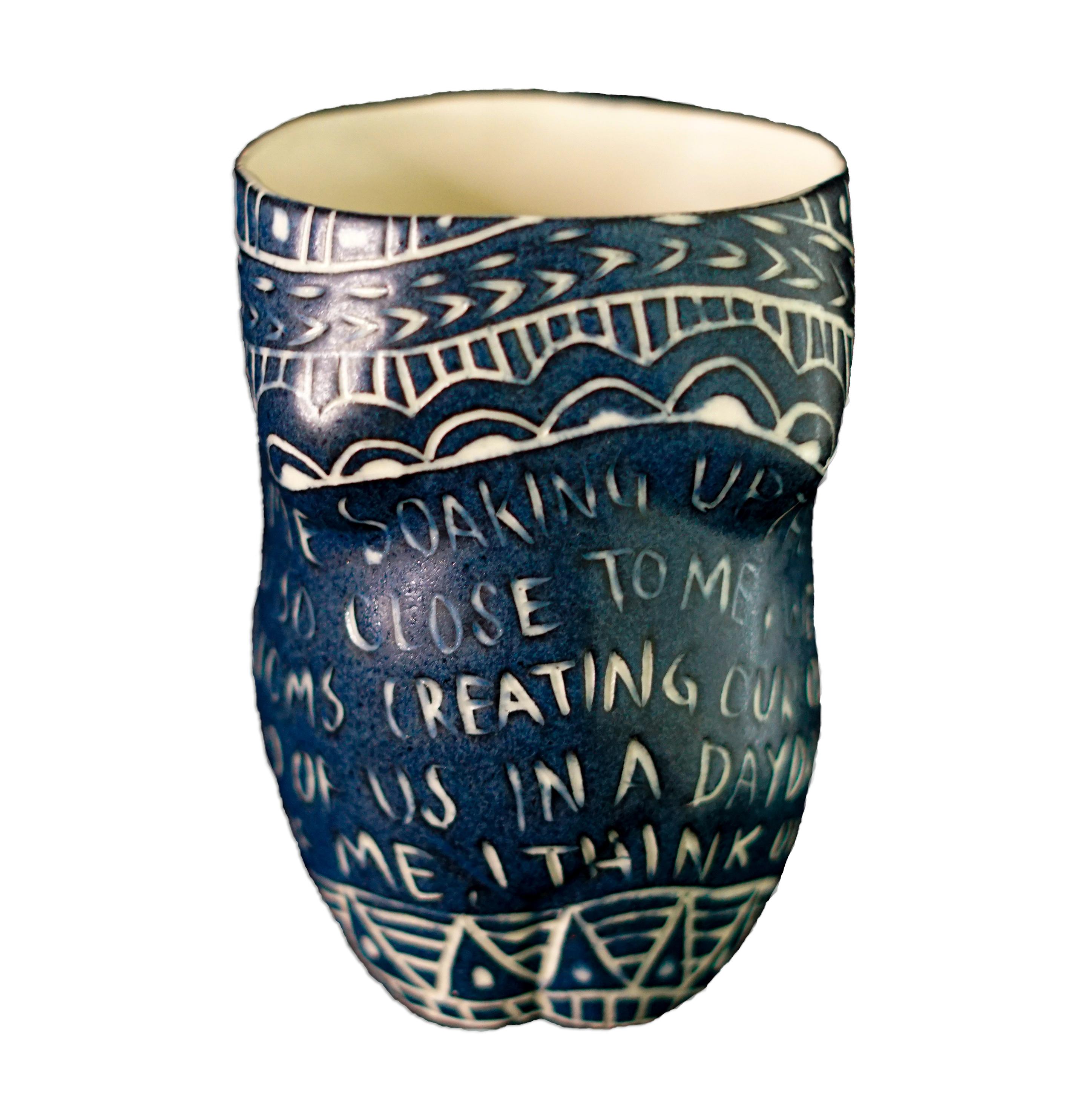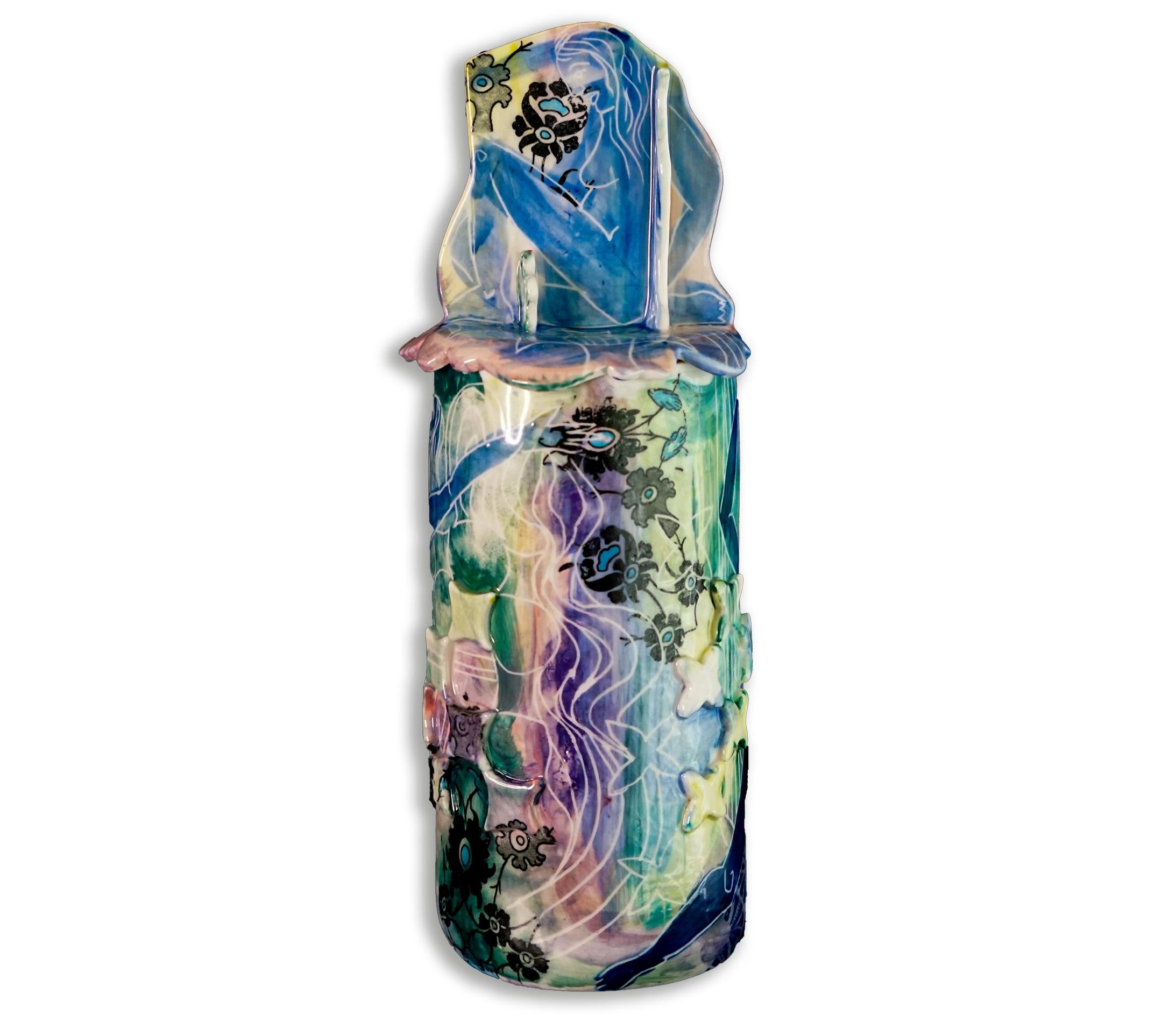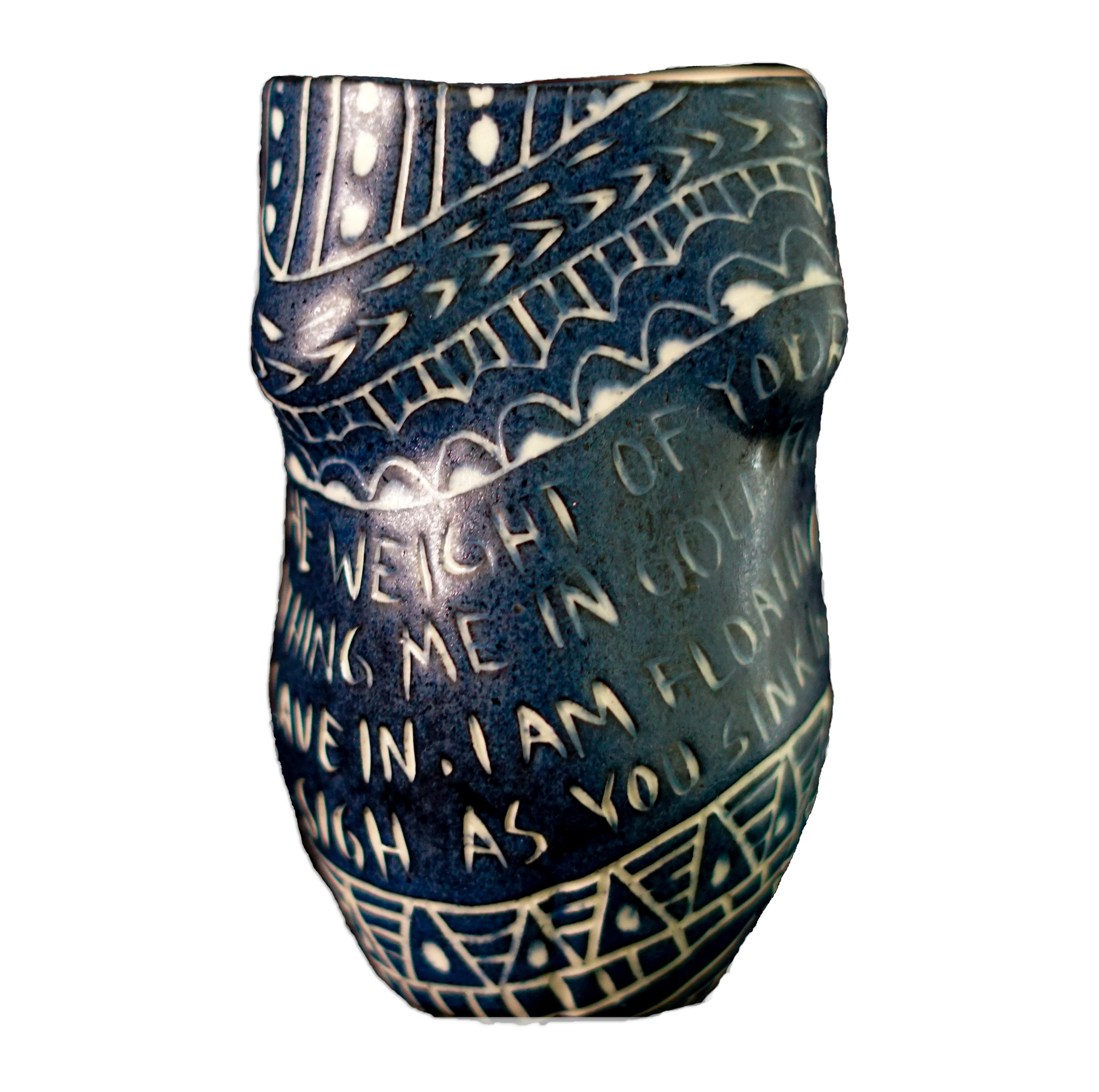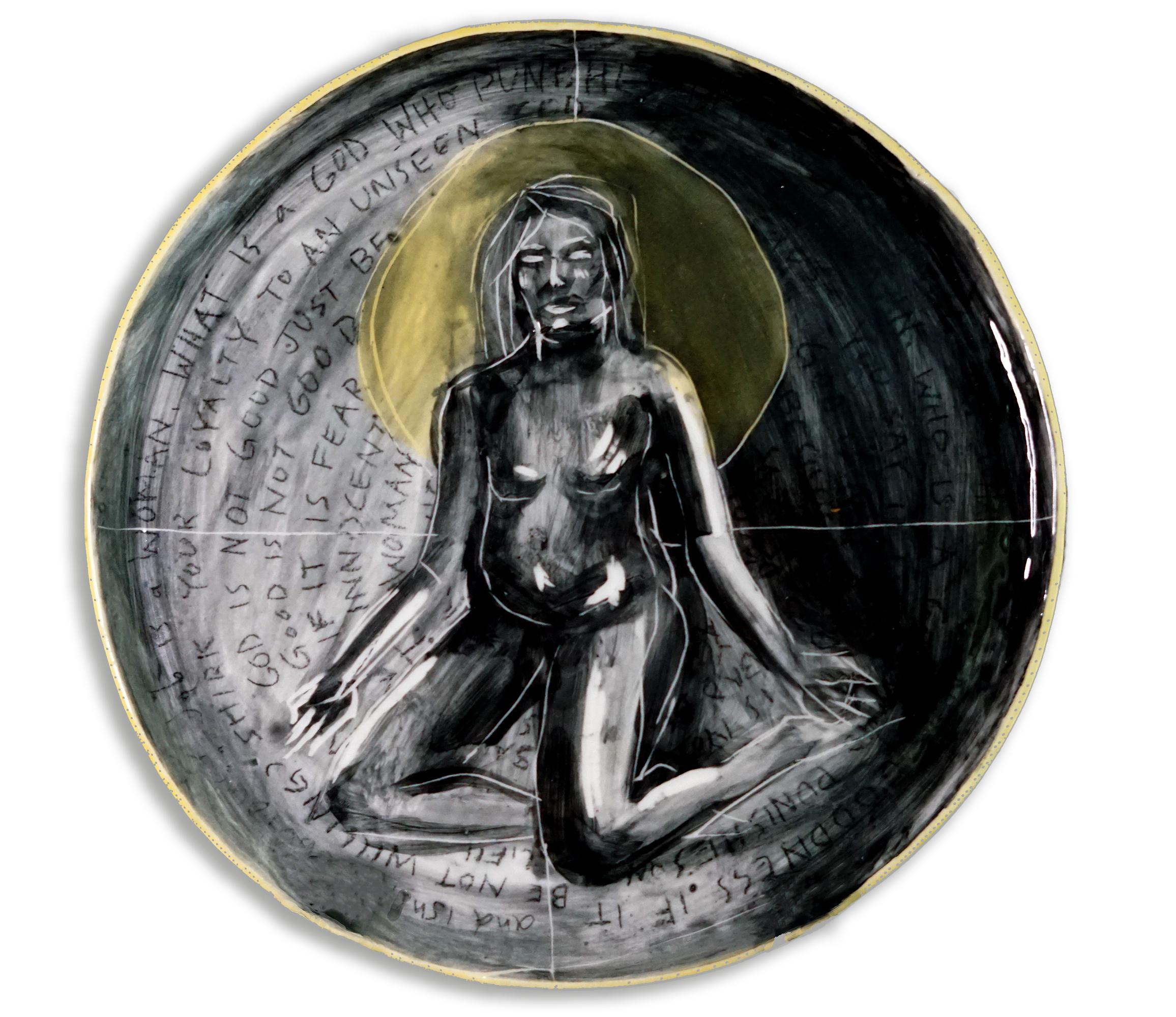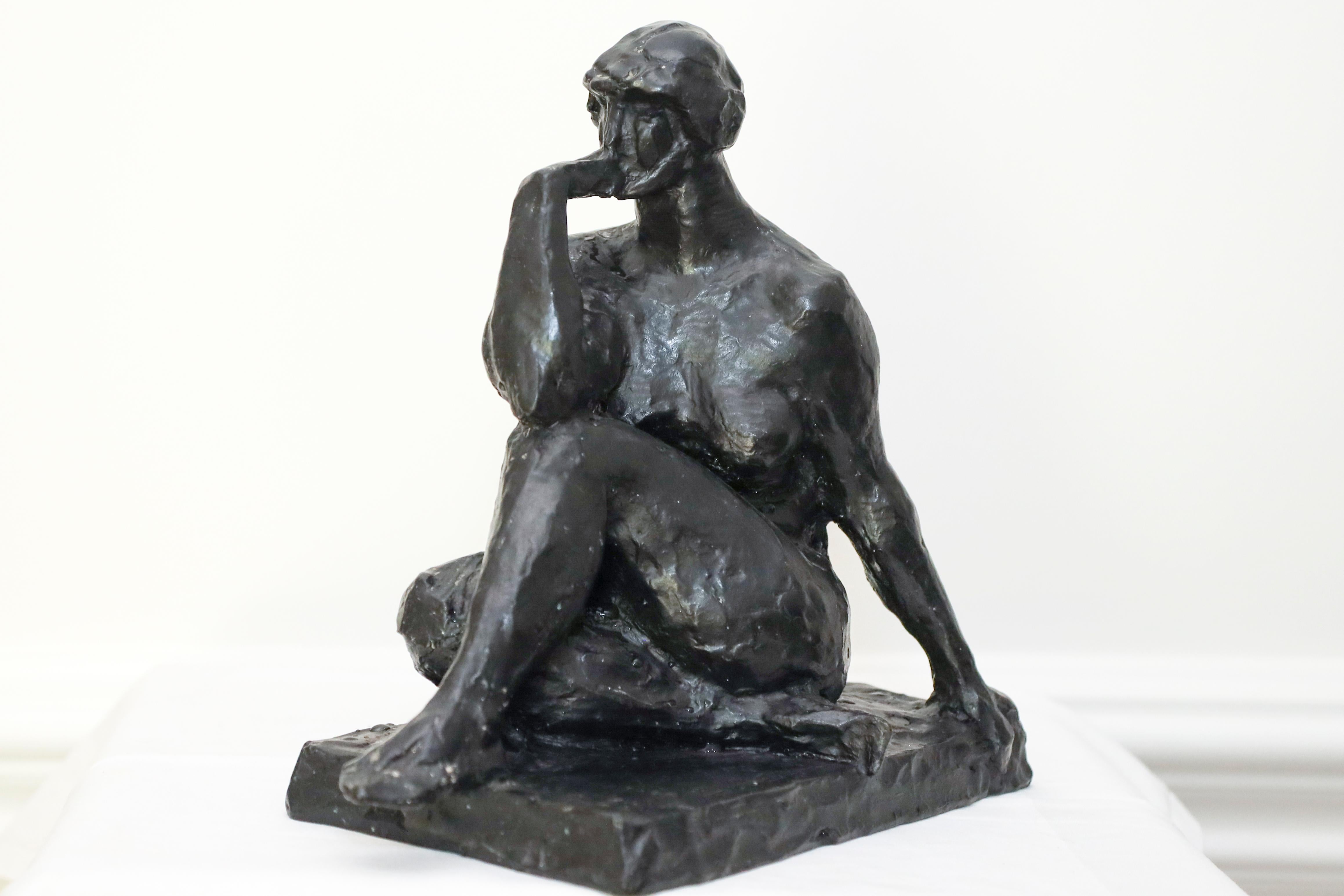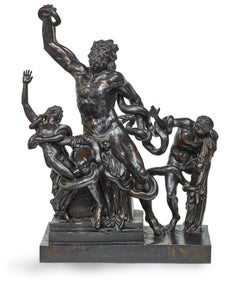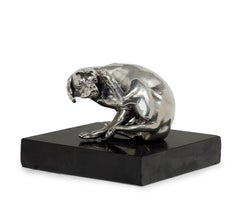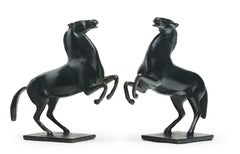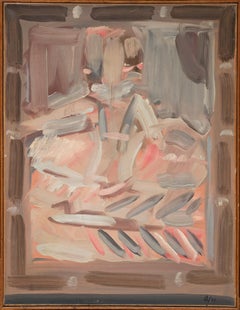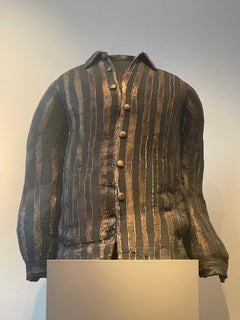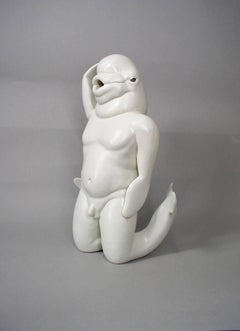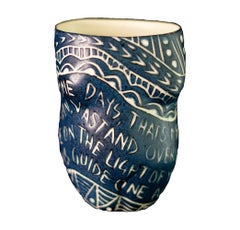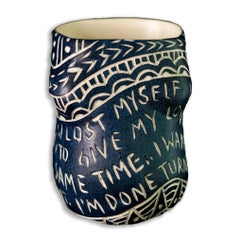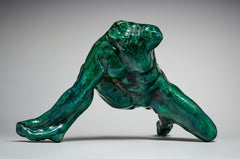
Iris Messenger of the Gods glazed ceramic sculpture by Jean Mayodon after Rodin
View Similar Items
Want more images or videos?
Request additional images or videos from the seller
1 of 10
Jean MayodonIris Messenger of the Gods glazed ceramic sculpture by Jean Mayodon after RodinCirca 1950
Circa 1950
About the Item
- Creator:Jean Mayodon (1893 - 1967)
- Creation Year:Circa 1950
- Dimensions:Height: 9.85 in (25 cm)Width: 17.33 in (44 cm)Depth: 9.45 in (24 cm)
- Medium:
- Movement & Style:
- Period:
- Condition:This sculpture was previously presented on its back, causing wear to the enamel above the right buttock, and at the level of the shoulder blades.
- Gallery Location:PARIS, FR
- Reference Number:1stDibs: LU156828360702
About the Seller
5.0
Vetted Professional Seller
Every seller passes strict standards for authenticity and reliability
Established in 2020
1stDibs seller since 2021
9 sales on 1stDibs
Authenticity Guarantee
In the unlikely event there’s an issue with an item’s authenticity, contact us within 1 year for a full refund. DetailsMoney-Back Guarantee
If your item is not as described, is damaged in transit, or does not arrive, contact us within 7 days for a full refund. Details24-Hour Cancellation
You have a 24-hour grace period in which to reconsider your purchase, with no questions asked.Vetted Professional Sellers
Our world-class sellers must adhere to strict standards for service and quality, maintaining the integrity of our listings.Price-Match Guarantee
If you find that a seller listed the same item for a lower price elsewhere, we’ll match it.Trusted Global Delivery
Our best-in-class carrier network provides specialized shipping options worldwide, including custom delivery.More From This Seller
View AllLaocoön and his Sons, an exceptional bronze sculpture by Giacomo Zoffoli
Located in PARIS, FR
This exceptional bronze group (unpublished), executed in Rome in the second half of the 18th century, bears witness to the fascination with the Laocoön since its discovery on January...
Category
1770s Old Masters Nude Sculptures
Materials
Bronze
Dog scratching its ear
Located in PARIS, FR
This amusing naturalistic sculpture in silver-plated pewter was probably made in the 17th century by Georg Schweigger. Inspired by a model created by another Nuremberg sculptor, Peter Flötner, it bears witness to the persistence during the baroque era of the naturalistic taste that emerged in the Renaissance. Intended as an ornament for some Kunstkammer, or cabinet of curiosities, this sculpture was a great success, as can be seen from the presence of similar works in many European museums.
1. Georg Schweigger
Georg Schweigger was a baroque sculptor and medal founder from Nuremberg, known mainly for his small-scale works in stone, carved wood and cast metal. His only large-scale work, the Neptune Fountain, has been in the Petershof Palace, the summer residence of the Tsars near St. Petersburg, since 1797. This monumental sculpture demonstrates his taste for the representation of movement, which we find in this small piece, inspired, as we shall see, by earlier models.
2. The success of a naturalistic theme
As is often the case in the history of art, the source of the Dog scratching his ear theme probably comes from an engraving, and more precisely from one made in Strasbourg in 1480 or in Aschaffenburg in 1481 by the Master of the Housebook, an anonymous engraver working in southern Germany at the end of the 15th century.
This engraving seems to have been Peter Flötner’s (1490 - 1546) source of inspiration. Peter Flötner was a sculptor and engraver who settled in Nuremberg in 1522. The Louvre Museum also has a gilded lead statuette dated between 1500 and 1515 (on deposit at the Musée de L'Œuvre in Strasbourg), which in turn is thought to have served as a model for other known statuettes.
This model was later taken up by the Frenchman Barthélemy Prieur...
Category
17th Century Naturalistic Figurative Sculptures
Materials
Marble, Silver
$5,850
Pair of Prancing Horses, two bronzes signed and numbered by Arno Breker
Located in PARIS, FR
An official artist of the Nazi regime, trained in Montparnasse in the 1930s, Arno Breker continued to sculpt after the fall of the Third Reich, producing large-scale public commissions in Germany and portraits of prominent figures. The two small bronzes presented here, dated around 1978, are part of a long tradition of prancing horses dating back to antiquity. The asymmetrical treatment of the two front legs and the inclination of the head make these two copies of the same artwork a highly decorative pair.
1. Arno Breker, a prolific sculptor, from the Bohemia of Montparnasse to the commissions from the Third Reich ... and from the Federal Republic of Germany
The son of a stone carver, Arno Breker studied fine art and anatomy in his native Elberfeld. At the age of 20, he entered the Düsseldorf Academy of Art. He moved to Paris in 1926, where he continued his training in the studio of Maillol, who dubbed him "the German Michelangelo of the twentieth century". He shared a studio with Alexandre Calder and frequented Jean Cocteau, Foujita, Brancusi, Pablo Picasso and other artists of the bohemian Paris of the time. It was also in Paris in 1933 that he met Demetra Messala, the daughter of a Greek diplomat who posed for Maillol and Picasso, whom he married in 1937. Having won the Prussian Prix de Rome in 1932, he left Paris to stay at the Villa Massimo, the German Academy in Rome.
Returning to Germany in 1934, his style evolved towards a more marked imitation of ancient sculpture. He created two monumental statues for Berlin's Olympic Stadium, before being appointed professor at the Berlin College of Fine Arts in 1937. He came to the attention of the Reich Propaganda Ministry, which awarded him several commissions and provided him with three large studios in which Breker produced many monumental sculptures to the glory of the regime. On June 23, 1940, Breker accompanied Adolf Hitler during a visit to Paris. During the Occupation, his political connections enabled him to intervene on behalf of many artists pursued by the Nazis: for example, he protected Pablo Picasso (then a Communist) from Kommandantur officers.
Most of Arno Breker's work was destroyed in Berlin at the end of the war in 1945 by bombing and intentional destruction perpetrated by soldiers of the victorious powers. After the fall of the Nazi regime, however, Arno Breker was never prosecuted. He opened a new studio in Düsseldorf, where he sculpted until his death in 1991.
He then carried out several public commissions in Germany (Bayreuth, Wuppertal), as well as portraits of numerous personalities, including King Mohammed V of Morocco, Léopold Sedar Senghor (commissioned by the Académie Française in 1978) and the two chancellors of the Federal Republic of Germany, Konrad Adenauer and Ludwig Erhard. The Arno Breker Museum in Nörvenich is now exhibiting some of his artworks.
2. Related artworks: from the Wild Horses of the Quirinal to the Horses of Marly
The prancing horse is a major iconographic theme, found in a series of sculptures from Antiquity, the Renaissance and the Classical Age. Various photos from Arno Breker's studio in Berlin confirm the predominant place of equine representations in his work (alongside male nude statues), and confirm that this reduced version created in 1978 is part of the artist's preferred repertoire.
Prancing horses are generally associated with a male figure in a group that, through a reference drawn from Antiquity, symbolizes man's domination over nature. In this respect, it is very interesting to compare our small bronzes with the horse forming part of a large sculpture by Arno Breker (made in 1936 and probably destroyed in 1945) depicting Alexander taming Bucephalus.
This statue is itself directly inspired by one of the best-known works of 18th-century French sculpture...
Category
1970s Art Deco Figurative Sculptures
Materials
Bronze
Infanta - Study Number 6, a 1960 painting by Fermin Aguayo after Velázquez
Located in PARIS, FR
Initialled and dated lower right "a/60", countersigned and dated on the back "aguayo 60".
A breath of modernity animates this iconic work, inspired by Velázquez' portrait of the Inf...
Category
1960s Modern Portrait Paintings
Materials
Canvas, Paper, Oil
Study for « Paysage de Fribourg » - 1943 a drawing by Balthus (1908 - 2001)
By Balthus (Balthasar Klossowski de Rola)
Located in PARIS, FR
Provenance: Frédérique Tison, Château de Chassy (Burgundy-Franche Comté - France)
Bibliography: J. Clair, V. Monnier Balthus, catalogue raisonné of the complete works, Gallimard, Pa...
Category
1940s Modern Landscape Drawings and Watercolors
Materials
Paper, Pencil
Study for "Getting up" – 1955, a preparatory drawing by Balthus (1908 -2001)
By Balthus (Balthasar Klossowski de Rola)
Located in PARIS, FR
In 1955, as he was residing at the Château de Chassy in the Morvan for two years, Balthus created a large painting entitled "Getting up". Balthus was inspired for this painting by t...
Category
1950s Modern Nude Drawings and Watercolors
Materials
Watercolor, Pencil
You May Also Like
Large Ceramic Clay Sculpture Of Striped Shirt In Man Size On Piedestal
Located in Frederiksberg C, DK
Large sized sculpture of a standing shirt including large piedestal.
Category
Late 20th Century American Modern Figurative Sculptures
Materials
Ceramic, Clay
Kneeling Beluga
By Keira Norton
Located in Kansas City, MO
Title : Kneeling Beluga
Materials : Stoneware, Glaze
Date : 2017
Dimensions : 11"x 7"x 6"
Description : A piece built in the round for the shelf or pedestal
For the past several yea...
Category
2010s Modern Nude Sculptures
Materials
Stoneware, Glaze
Price Upon Request
Some days that’s me...", Porcelain Cup with Sgraffito Detailing
Located in Miami Beach, FL
This cup is one of 48 that make up the installation, “Fragments of Our Love Story.” These cups feature feminine forms which recall the Venus of Willendorf and other historical fertility objects...
Category
2010s Modern Figurative Sculptures
Materials
Ceramic, Clay, Porcelain, Paint, Underglaze
I lost myself..., Porcelain Cup with Sgraffito Detailing
Located in Miami Beach, FL
This cup is one of 48 that make up the installation, “Fragments of Our Love Story.” These cups feature feminine forms which recall the Venus of Willendorf and other historical fertil...
Category
2010s Modern Figurative Sculptures
Materials
Ceramic, Clay, Porcelain, Paint
Me soaking up the light....", Porcelain Cup with Sgraffito Detailing
Located in Miami Beach, FL
This cup is one of 48 that make up the installation, “Fragments of Our Love Story.” These cups feature feminine forms which recall the Venus of Willendorf and other historical fertility...
Category
2010s Modern Figurative Sculptures
Materials
Ceramic, Clay, Porcelain, Paint, Underglaze
The Moon, Porcelain Jar Sculpture
Located in Miami Beach, FL
This sculptural jar is the first to feature the figure in combination with a collaged and carved surface. The women dance around in an homage to Matisse, yet the title acknowledges t...
Category
2010s Modern Figurative Sculptures
Materials
Ceramic, Clay, Porcelain, Paint, Underglaze
